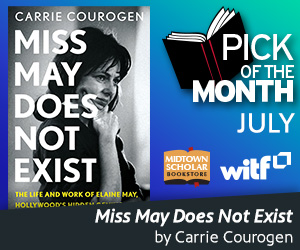America’s National Parks: A Love Story
In the spirit of our just-concluded Independence Day celebration, I would like to make a personal declaration: I love America’s national parks.

The Virgin River courses through Zion National Park, Utah.
It is a sentiment shared by millions of Americans and countless more millions of visitors from around the world who flock to our parks in droves, especially over the summer months. In fact, hundreds ofthousands of history buffs invaded the Gettysburg National Military Park over the last week to join in the commemoration of the 150th Anniversary of the bloodiest battle of the American Civil War.

Gettysburg National Military Park
What they undoubtedly discovered was a national park that preserves and honors the sacrifice, what Lincoln called “the last full measure of devotion,” that these patriots made for their country.
The essence of the United States of America, both in a physical and metaphorical sense, is found in our national park system. It’s something National Park Service Director Jonathan Jarvis eloquently made explicit when he spoke last week ata Gettysburg 150th event:
“The entire sweep of the American narrative is encompassed in our national parks. From the very first Americans to cross the Bering Sea during the Ice Age to the first shots in our struggle for independence to the early exploration of the continent. Our national parks tell the story of industry and technological innovation. They tell the story of the immigrant, the patriot, the woman, the child. They tell the stories not only of great men and women, but of the downtrodden and the social movements to right the wrongs they suffered.
“Our finest art. Our greatest notions. Our highest ideals. The national parks hold the places that are sacred to us as a people because they define us. They represent not only where we’ve been, but who we are and what we aspire to be.”
Aspirationmeets inspiration in America’s 401 national parks.

South Rim, Grand Canyon National Park, Arizona
Our family was blessed this summer to visit several of these treasures in Utah and Arizona. My favorite was Bryce Canyon in Utah where the fantastically shaped “hoodoos” stand like bright orange sentries against an impossibly blue sky.

Bryce Canyon National Park, Utah
As we walked the Navajo Loop Trail down the canyon, my childrenand I marveled at the beauty and we wondered how time, wind and rain could carve stone into suchamusing and haunting shapes.

The Natural Bridge at Bryce Canyon National Park, Utah.
The word majestic best describes Zion National Park in Utah, and of the parks we visited, it ranked as the favorite for myhusband and children.

A waterfall near the Upper Emerald Pool at Zion National Park, Utah.
Vantage points, with names like Court of the Patriarchs and the Temple of Sinawava, invited usto explore more deeply the towering cliffs, perhaps to find “the better angels of our nature.”

The Temple of Sinawava at Zion National Park, Utah.
I watched in awe, and with more than a tinge ofworry, as my two sons ventured up the steep and treacherous path to Angel’s Landing. A sign at the start warns hikers that six deaths have occurred there since 2004. Undaunted, the boys made it to the top and descended proudly armed with a memory of adventure, accomplishment and scenic grandeur they will carry forever.
The Grand Canyon in Arizona next beckoned us.

A vista along the South Rim, Grand Canyon National Park, Arizona.
We scouted a number of vistas along the South Rimand then hiked down South Kaibab Trail, clinging occasionally to the canyon walls to make way for mules carting their passengers back up the narrow slope. Ooh Aah Point elicited exactly those expressions as the vast sweep of the canyon lay before us.

Along the South Kaibab Trail, Grand Canyon, Arizona.
Late in the day, my husband and I surveyed a lookout point called The Abyss for a breathtaking view of the Colorado River milesbelow us. We marveledat the courage of the pioneers who blazed thesetrailsand we praised the wisdom of Americans after them who have fought to preserve the history andthe unblemished splendorof these remarkable lands.

The Colorado River from The Abyss, a lookout point along the South Rim, Grand Canyon, Arizona.
I came away from this journey with an overpowering sense of duty: We must do all we can to ensure that future generations of Americans can behold the spectacular unspoiled beauty of America. As Jon Jarvis said in Gettysburg:
“We regard freedom as our birthright and a foundation of American life, but it must be taken care of. We must be sure that freedom is not only born, but that it survives and flourishes. And that means rededicating ourselves to the ideas on which the nation was founded: Liberty, fairness, tolerance, the common good.
“This is one of the roles the national parks play in preserving America’s sacred places. In the crises and uncertainties of today, our national parks speak with the wisdom of the past. For inspiration and guidance, we can look to these places where America’s highest ideals are enshrined. In the national parks we learn about democracy, sacrifice, heroism, and hope, not just in the abstract, but in the very places where those concepts shaped our history.”
Let us together invest in and protect the places that define us as a nation and that enrich us as individual citizens.

Wall Street along the Navajo Loop Trail at Bryce Canyon National Park, Utah.
Be sure to check out Ken Burns’film series, “THE NATIONAL PARKS: America’s Best Idea,”airing on witf-TV Sundays at 2 p.m. starting September 1 through October 6. And I encourage you to shareyournational park love story with all of us at witf!

